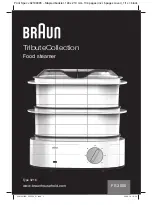
Page K-9
Repair and Service Manual
B
B
MECHANICAL BRAKES
Read all of Section B and this section before attempting any procedure. Pay particular attention to Notices, Cautions, Warnings and Dangers.
Either condition can prevent the brakes from adjusting
properly.
Fig. 8 Checking for Excessive Free Travel
Adjustment of free travel depends on manufacturing date.
The correct brake pedal free travel setting varies depend-
ing on the date of manufacture. Older models (latch arm
without a 1/4" (6 mm) diameter hole in the lower portion
(Ref. Fig. 7) should be set to 2" – 2 1/4" (5 - 6.5 cm) free
travel. (with a 1/4" (6 mm) diameter hole in the lower end
of the latch arm), free travel should be set to 7/8" - 1 1/8"
(2.2 - 2.9 cm) (Ref. Fig. 8).
The parking brake latching force may be checked as a
verification after setting brake pedal free travel. The pre-
ferred method of checking parking brake latching force is
to place a ‘bathroom’ scale on the service and parking
brake pedals. Using both feet, press the scale down
evenly against the parking brake pedal until it latches.
The parking brake should latch between 65 and 75 lbs.
(29 - 34 kg) indicated on the scale
Adjust brake pedal free travel as described in ’MAINTE-
NANCE AND REPAIRS’ if required.
4.
Inspect the brake cables.
Inspect for damage to the outer cable, fraying of the
inner cable or lack of free motion when the pedal is
applied and released. Inspect the brake cable sup-
ports to be sure the cables are properly secured. If
any of these conditions are found, replace both cables
and equalizer as a set.
5.
Check the clevis pins.
Check clevis pin attaching the brake cables to the
brake levers. They must be loose when the brake
pedal has been released. If the clevis pins are not
loose, but brake pedal free travel is correctly adjusted
and the brake cables move freely, the problem is likely
in the wheel brake.
6.
Inspect the brake cable equalizer linkage.
Inspect for signs of corrosion, damage, wear or exces-
sive misalignment. Replace if corrosion, damage, or
wear is found.
7.
Inspect the compensator assembly.
Inspect for damage, corrosion or wear. Replace the
complete assembly if problems are found. In general,
no adjustment will be needed, as the spring assembly
is factory calibrated. With the parking brake disen-
gaged check that the compensator spring length is 3
15/16" (10 cm) (Ref. Fig. 9). If an adjustment is
required, it should be made at the nuts at the spring
facing the front of the vehicle. Tighten the jam nut
firmly after adjusting.
Fig. 9 Equalizer and Compensator
8. Inspect parking brake pedal hinge.
Check for broken or rusted springs. and correct reten-
tion of the hinge pin. Operate parking brake pedal to
confirm smooth operation of the hinge mechanism
(Ref. Fig. 10).
9.
Check the condition and operation of the parking
brake latching mechanism.
The parking brake should latch firmly and release as
Floor
Board
Measured Amount of Free Travel
NOTICE
Not To
Exceed
1/8"
(3 mm)
in
Either
Direction
View From Below
Front
Spherical Nut
Lock Nut
3 15/16"
(10 cm)
Spring
Adjusting Nut
Jam Nut
NOTE: This dimension is factory pre-set with the
parking brake disengaged and is not to be changed.
Normal
Position
Содержание Shuttle 2
Страница 6: ...Page iv Repair and Service Manual NOTES TABLE OF CONTENTS ...
Страница 195: ......
















































